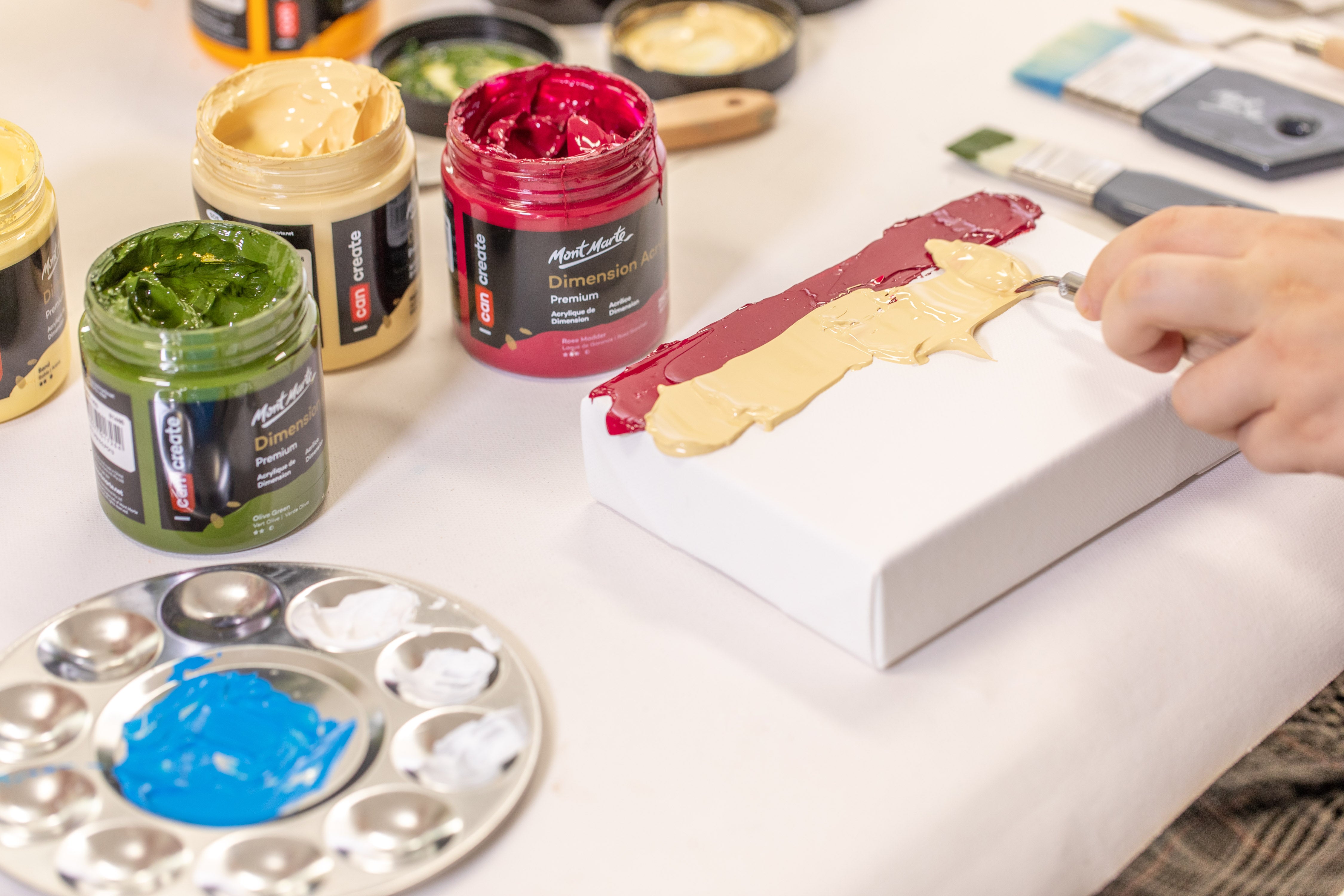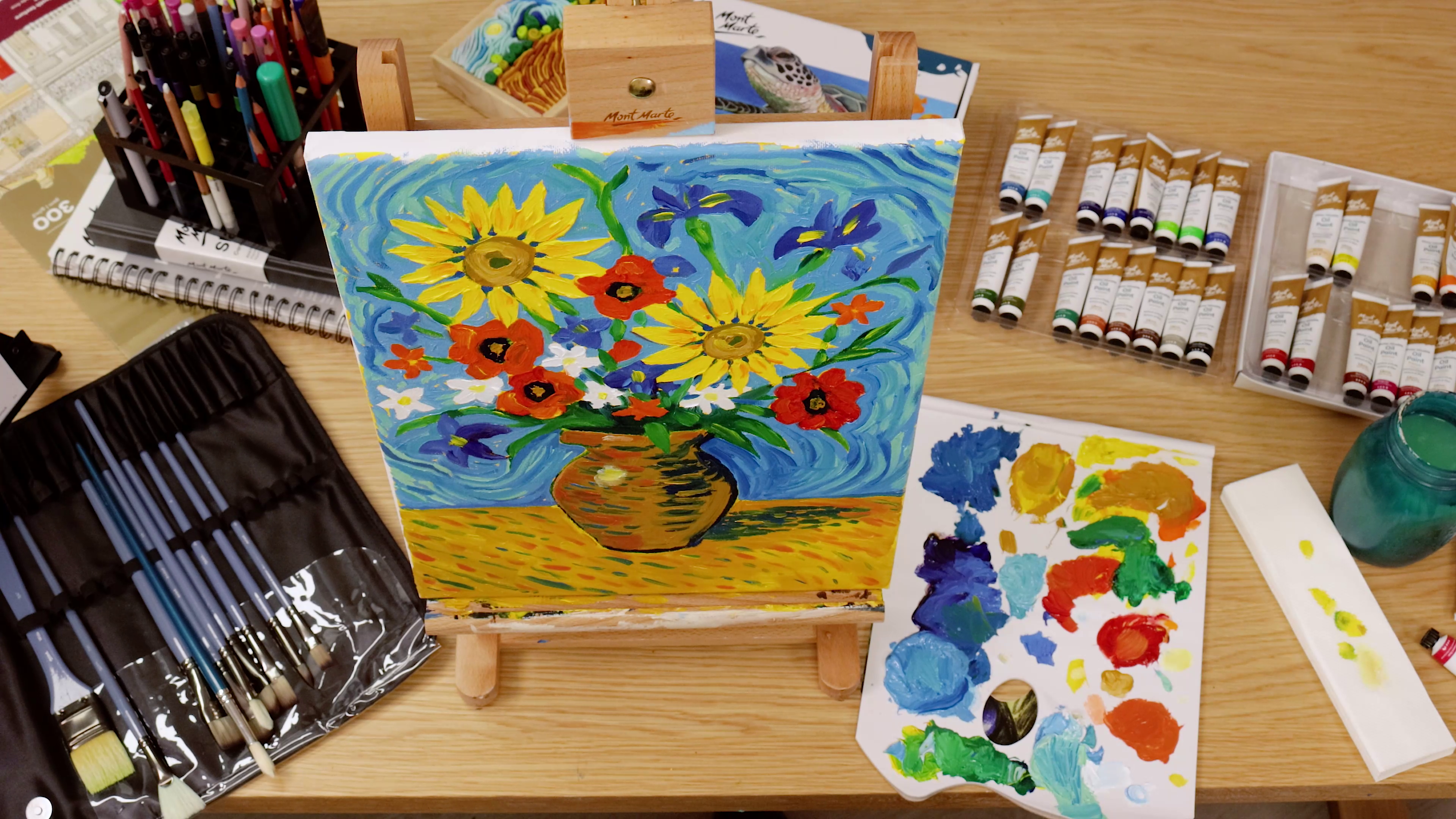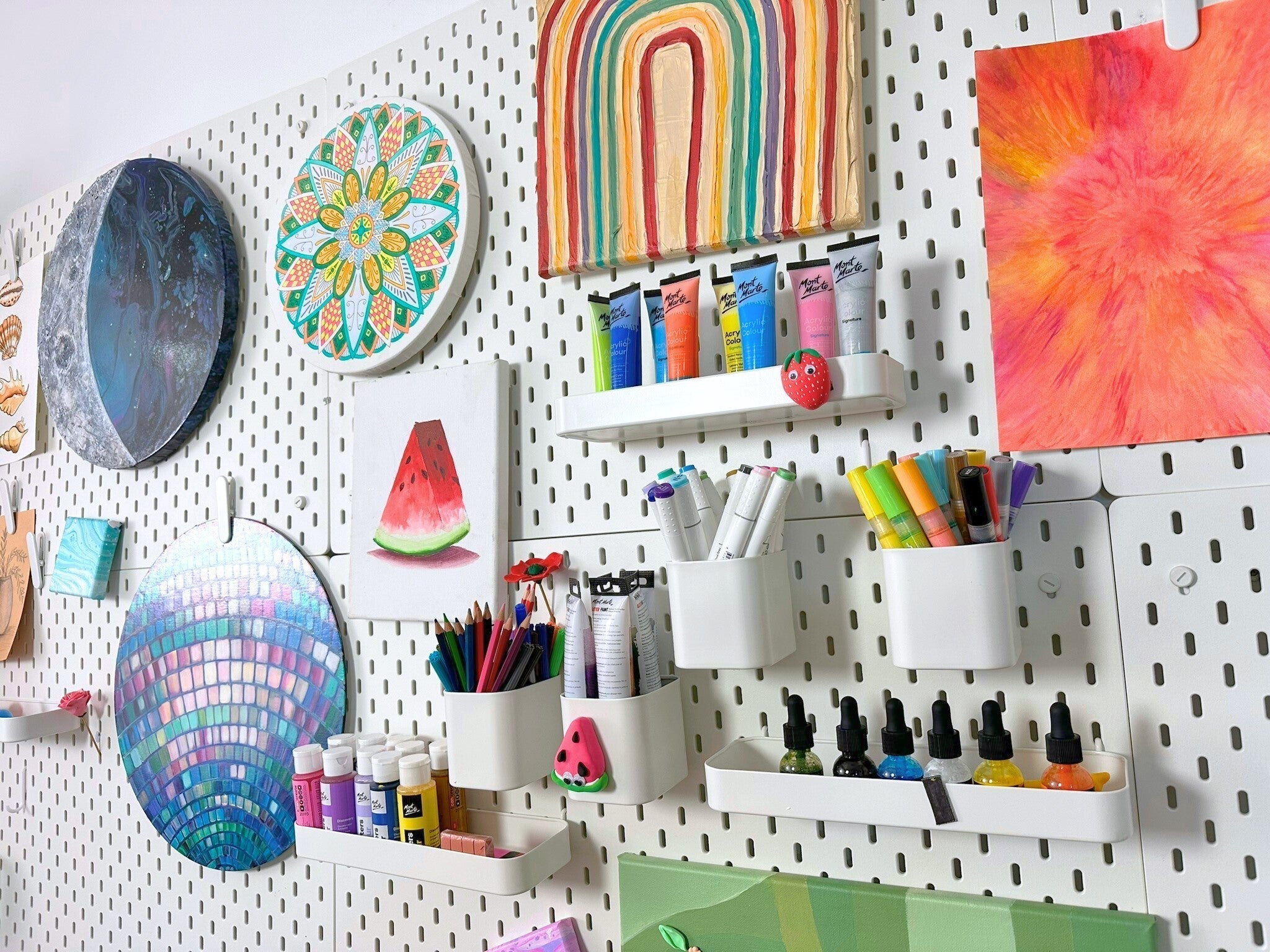If you love texture and want to have a go at impasto, here are some hot tips to get the best results! From making defined brush strokes to trying out the techniques of famous artists, we’re diving into all kinds of helpful hints. Grab your art supplies and let’s get creating!
Impasto brush strokes

It’s important to start with the basics – what is impasto? Impasto in painting is a technique where paint is layered or applied thickly so that it stands out from an art surface for a 3D effect. It’s great for building texture and dimension, bringing an extra element of depth to your work.
Impasto techniques can be done with brushes, palette knives, or anything that applies paint thickly. You can create round dots, long brush strokes, short lines, or organic forms with paint to define your subject matter and make it stand out.
If you want some ideas for using a palette knife to create texture, we have an inspo article you can check out!
Acrylic impasto painting techniques
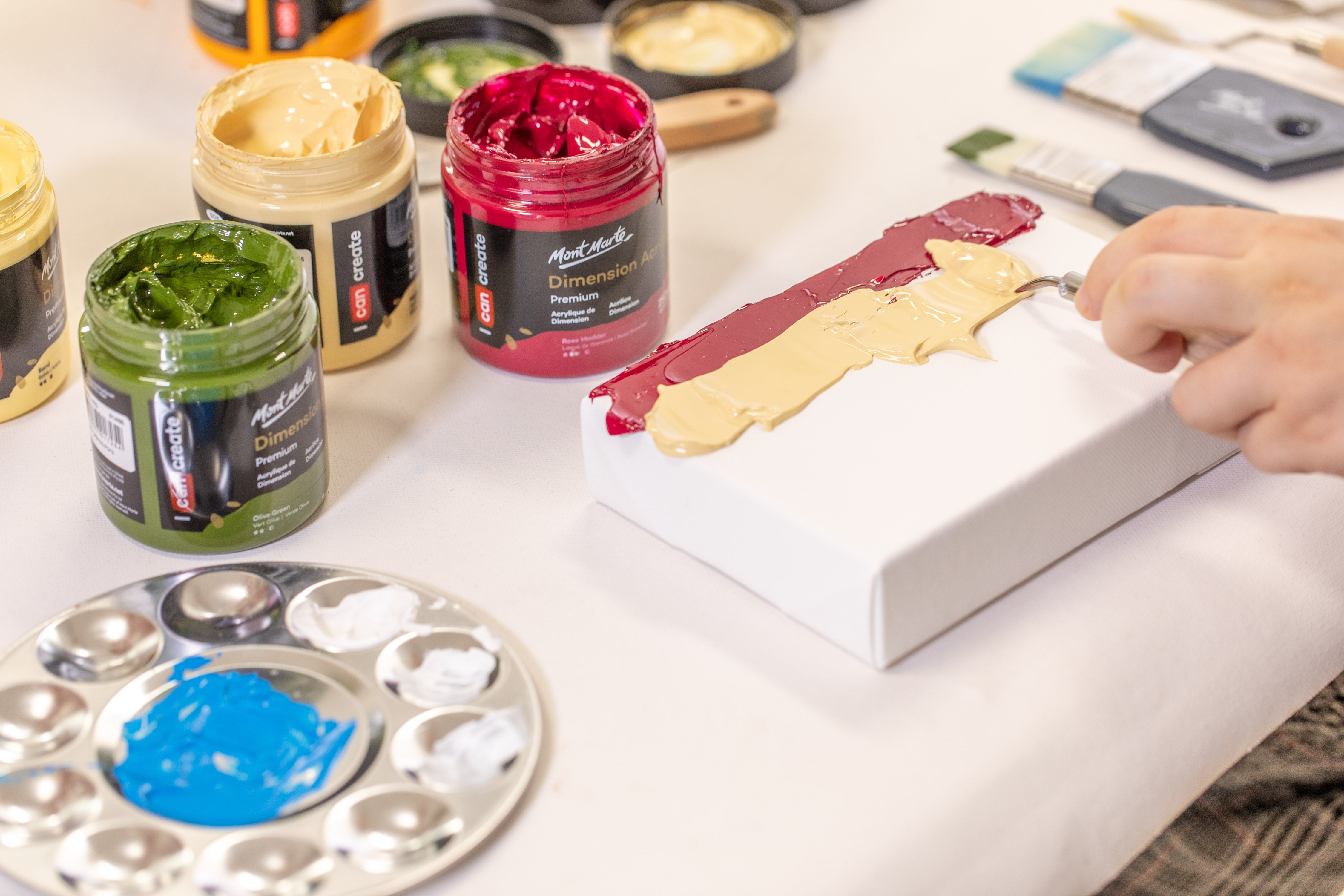
Acrylic paint isn’t typically made with a thick formula that holds its shape as it dries. It will often level out and dry flat for a smoother look. Our Dimension Acrylic paints are made for thick impasto painting and texture techniques; they’ll dry to stand out from the page if applied heavily. Our Dimension Acrylic demo shows you how to layer the paints and add depth, ideal for quick texture results. They’re made ready to use and dry fast so you can explore impasto with less fuss.
If you want to transform regular acrylic paints so they hold their shape, try adding our Mont Marte Impasto! It’s a clear-drying medium that you can mix into your paints for impasto brushstrokes and thicker paint viscosity. It also doesn’t change your colour hue and opacity, so your paints stay vibrant as they thicken.
Whether you’re using Impasto or Dimension Acrylics, you can make patterns and texture in loads of ways. Slather on with a palette knife, use stiff-bristled brushes for defined stroke lines, or dot on thickly with a circular tool. You could also apply your paint heavily as a base layer and before it dries, use texture tools such as combs or rollers to carve patterns.
Impasto technique oil pastel
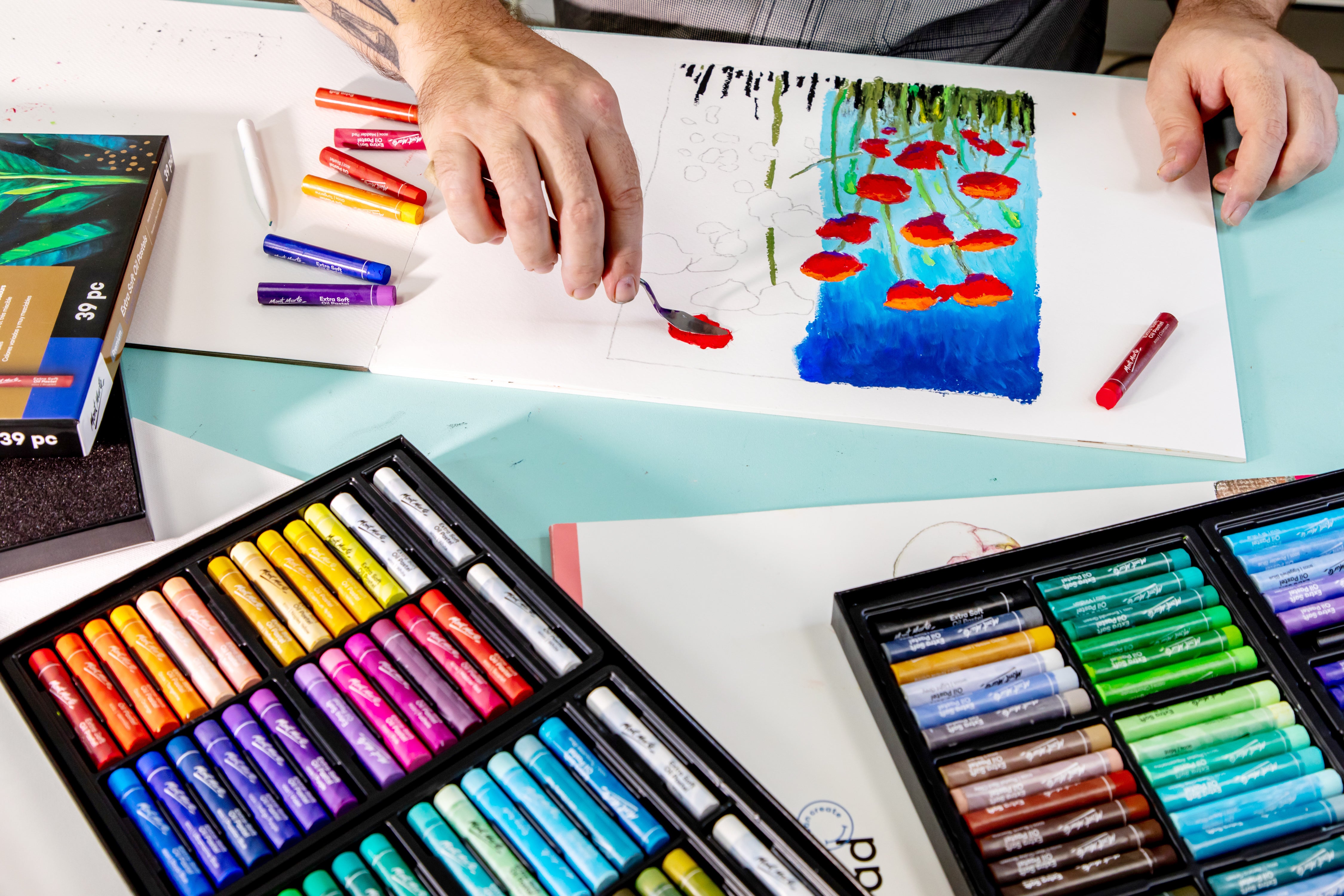
Oil pastels can be a great medium for adding depth and impasto texture. Our Extra Soft Oil Pastels have a buttery consistency that layer and build for colours that stand out. To make defined strokes, you can try a few different impasto techniques.
1. Use a palette knife. Cut off small pieces of oil pastel using a palette knife. Smear it across your art surface with the flat side of the palette knife for thick impasto strokes, blending or leaving it chunky as you see fit!
2. Press firmly and drag the pastel. You’ll notice that the soft texture of our oil pastels makes them easy to smear thickly onto your art surface. Just be careful how hard you press as they can snap – but you can use a palette knife to blend in any broken pieces for more impasto texture!
3. Apply heat. You can use a blow dryer to heat up your oil pastels, so they apply thickly without pressing hard. It’s kind of like when you melt a candle and smear some of the melted wax – it dries to be firm and defined! Layer up this partially melted oil pastel for dynamic dimensional effects.
Thick oil paint technique

Oil paints naturally come thick, with a formula that holds its shape as it dries. While you can thicken acrylics with Impasto for texture, you can thin oils with oil mediums for smooth flow. So, using them in their natural state without any mediums is great for adding depth – just apply them thickly and avoid blending out for that bold impasto effect.
You can check out how oil paints can be used to create texture in our oil paint landscape lesson. You’ll notice the foreground of this painting has lots of short impasto strokes to create the impression of fallen leaves.
Van Gogh impasto
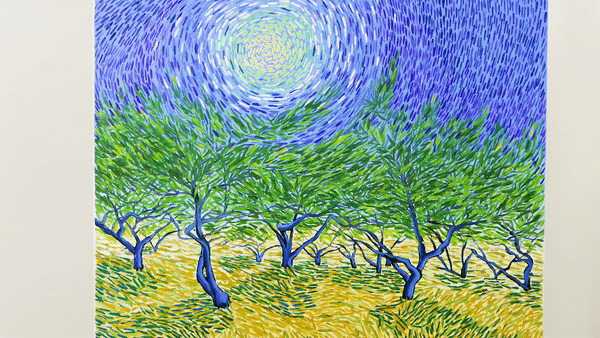
An artist renowned for using the impasto painting technique is Van Gogh, known for his striking post-Impressionist creations. Narrow, short lines of paint were applied thickly and layered across the canvas to convey movement and emotion.
You can try out this technique at home by painting your subject matter with short, impasto strokes with a brush like a filbert. Add dimension with crosshatching and avoid blending the paint on the canvas. Go bold with your colours and exaggerate their vibrancy for contrast and interest. For more hints on painting impasto like Van Gogh, check out our tips article, or learn how to paint a landscape just like he would with our art lesson.
Rembrandt impasto technique
Rembrandt created an impasto style of painting on a finer scale through his huge range of portraiture. By applying his paint thickly, small variations in the surface level of the paint brought dimension and a rougher quality to his subjects’ skin texture. The direction and weight of the impasto lines deepens the shadows and adds movement to the highlights, heightening the realism of his works.
To have a go at home, try building up your paint layers thickly and drag a soft brush over the surface before it's dry. The movement of your strokes will be captured in the lighter tones, with fine texture added from the soft brush bristles.
Monet impasto
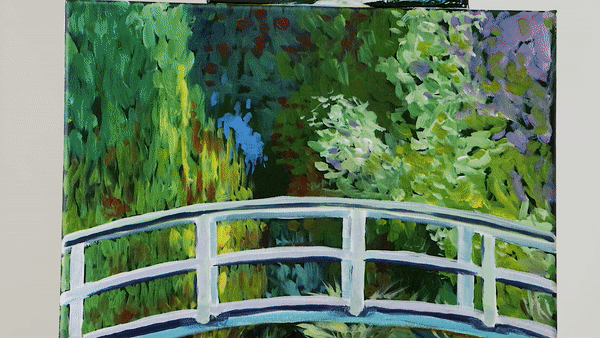
Monet used impasto to achieve his classic broken colour technique, creating impressions of natural landscapes. Broken colouring is when you apply paints in small strokes without mixing them, so they appear to optically blend at a distance. Working with thick impasto strokes shows off the layers of colour as the paint scumbles and breaks, highlighting undertones and temperature.
We can walk you through the process in our Monet painting lessons, such as our Water Lilies inspired project, or our Bridge Over a Pond of Water Lilies artwork.
Jackson Pollock impasto
Pollock takes a more abstract approach to impasto, using sweeping drips, smears, and swipes of paint. His artwork didn’t depict realistic subjects and had a free style, focused on bold, erratic colour layering.
His technique is called ‘action painting’ and involves using the motion of your body to splatter and drip paint spontaneously across your art surface. There aren’t many rules, and the end products are open to interpretation. Try freely playing with paint for your next project for some cool impasto texture!
Leonid Afremov
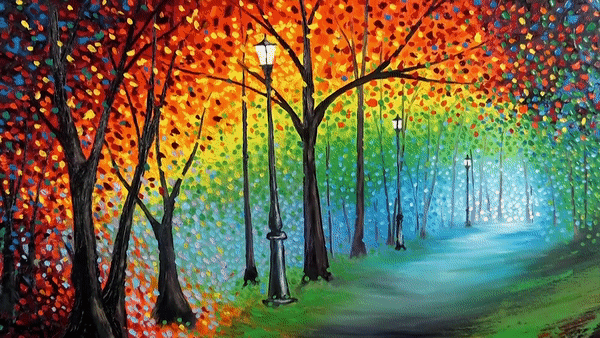
Afremov used a palette knife to create his striking, colourful cityscapes. Layering short, dotted impasto strokes creates a bokeh effect for his painted light sources as the highlights are mottled by the surrounding bold colours.
Have a go at home by picking up some palette knives and following our Leonid Afremov-inspired art lesson. Why not create with colour?
Now you know how to paint impasto, get ready to pick up your paints or pastels and start your next texture project. Whether you take inspo from one of the greats, or you start with the basics, we hope these tips make you feel more confident when creating.
If you do make something, #montmarteart or tag us @montmarteart on Instagram or Facebook. We’d love to see what you come up with!
Looking for texture mediums? We’ve got Impasto, Oil Paints, Dimension Acrylic, Extra Soft Oil Pastels, Modelling Paste, and Sand Texture Medium for all kinds of fun experimenting.
For more handy hints and ideas, check out the Tips and Techniques in our Create Space. We have a blog dedicated to 20 Texture Techniques that might help you get started!
To stay updated with our latest inspo, featured artists, projects, and more, subscribe to Creative Connection by entering your email down below.


























